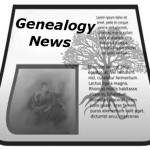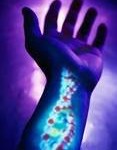Search results
My Heritage Buys Geni.com
November 27, 2012 by ramona
Filed under Articles, Latest News

Israeli based genealogy site My Heritage just purchased competitor Geni.com. The purchase will allow My Heritage to acquire billions more global records, making the company a huge competitor in the genealogy market.
The addition of the Geni.com records brings My Heritage up to approximately 72 million registered users. These numbers elevate My Heritage as a serious competitor to Ancestry.com, which had about 1.87 million users as of the first quarter of 2012. One more point that solidifies My Heritage as a global force in online genealogy research is the site’s focus on collaboration and record sharing: which gives it a great social media feel.
Gilad Japhet, founder and CEO of My Heritage commented. “Today’s news is a major turning-point for the family history industry, giving us significant new resources to extend our market leadership and deliver new value to families worldwide,”
Adding…
“Well established as an innovative and social brand, Geni.com is a natural addition to My Heritage and together we look forward to taking collaborative family history to new heights. Over the past few years our dedicated workforce has transformed My Heritage from a garage start-up into a successful, dynamic and global company. With new funds, impressive new talent from Geni.com and new world-class leaders on our Board, we look forward to fulfilling our potential and accomplishing our mission to bring family history to the masses.”
Along with the new records, My Heritage also gains some new talent in the form of Geni.com employees and engineers. One more addition to the My heritage family will be founder of Geni.com David Sacks, who will take a seat on the My Heritage board of directors.
About the sale, Sacks says, “What we’ve learned over the years building Geni is that there are three key assets that customers want in the genealogy space: records, private trees, and the world family tree. This deal brings together all of these pieces to form the most complete offering in the genealogy space. Together with My Heritage, we look forward to continuing Geni’s mission of connecting humanity through a single family tree”
Although united, the two companies will operate separately keeping their independent services: yet allowing users an option to collaborate. A system of two-way information exchange between the sites is a huge added-value initiative for users of both sites. My Heritage users gain additional records and Geni.com users gain My Heritage’s Smart Matching technology (a fantastic tool that finds common matches between user’s family trees) and access to My Heritage DNA kits for those interested in genetic genealogy.
Global Adoptee Genealogy Project
May 6, 2012 by ramona
Filed under Articles, Genealogy groups, societies and organizations, Genealogy Research Resources, Latest News
 The world of genealogy is ever evolving; every day there is word of a new group or project on the horizon that promises to enrich the global genealogy community. As a genealogist who is also an adoptee, I am always excited to hear about groups like The Mixed Roots Foundation and their Global Adoptee Genealogy Project.
The world of genealogy is ever evolving; every day there is word of a new group or project on the horizon that promises to enrich the global genealogy community. As a genealogist who is also an adoptee, I am always excited to hear about groups like The Mixed Roots Foundation and their Global Adoptee Genealogy Project.
Today in the United States 6 in every 10 people are touched by adoption.
The Mixed Roots Foundation is the first ever-registered charity set up to aid adoptees in finding their genetic roots. The charity, whose board members are all adoptees, has made it their mission to support those individuals adopted and fostered, by raising awareness of the adoption experience.
Among the goals of the Mixed Roots Foundation is the mission to provide more post adoption resources for adoptees and their families. This includes a project geared to help adoptees trace their family tree. The project that directly addresses this is the Global Adoptee Genealogy Project (GAGP).
Global Adoptee Genealogy Project
The Global Adoptee genealogy Project is looking to answer the questions.
“Who are you? What are you? and Where are you?”
The aim of this project is to aid adoptees in learning more about their genetic and cultural roots. In an effort to achieve this goal they are partnering with the DNA testing facilities 23andME and Family Tree DNA. The foundation will also be recruiting adoptees and their families for participation in the project and through the Filling in the Gap Fund, they will be providing funds to offset the costs of DNA testing for adoptees in need of financial assistance.
Bennett Greenspan, president of Family Tree DNA has this to say about the project.
“As an evangelist for genetic genealogy, I encounter adoptees all the time. They want this and, more importantly, they need GAGP. Adoptees have a thirst to know who they are, what they are and why they were adopted. DNA testing offers potential answers to two of those three questions. We hope that as the database grows, more and more matches will be made.”
One of the project supporters, The Evan B. Donaldson Adoption Institute, (a national leader in adoption-related research, education and advocacy) will be playing a large role in efforts to reach the adoption community and get the word out about GAGP.
Executive Director, Adam Pertman states, “The Mixed Roots Foundation is doing something genuinely important, with real scope and vision, and with the promise of impacting many, many lives in a positive way,” Peterman also says, “We know, from both research and experience, that access to one’s own information is a vital part of life, including shaping a positive identity. This project will go a long way toward giving adopted people the tools and knowledge to start putting together the pieces of their own puzzles. It’s purely wonderful.”
The project launch is set for Monday May 21, 2012 at the Punch Line Comedy Club in San Francisco, CA. A portion of proceeds from this fundraiser will go to the Filling in the GAGP Fund. Additionally DNA testing partners have donated testing kits as raffle prizes.
For more information about Global Adoptee Genealogy Project and The Mixed Roots Foundation, join us on the Genealogy in General forum.
Genetic Genealogy: What is it, how does it work and why should I be interested
October 20, 2011 by ramona
Filed under Articles, General Tips, Getting Started in Genealogy, Introduction to Genealogy

In 1997, a story hit the presses about an English Schoolteacher who was genetically linked to a 9,000-year-old skeleton known as Cheddar Man. Since then genealogy researchers, beginning genealogist and pretty much everyone interested in researching their family tree has become interested in genetic genealogy. However, it was not until 2008 that the genealogical community began to make great strides in using this research method. Today several genealogy groups and genetic researchers offer services that can map your DNA and set you on the path to digging up some very deep roots.
Before considering genetic genealogy as a research method, I think it is important to understand exactly what you can and cannot gain from it. In addition, it might be helpful to put some perspective on where it fits in your genealogical toolbox.
What it will do and what it won’t do
Genetic genealogy does have its limitations; it cannot reveal who your ancestors are. Thus, it is no shortcut to good solid investigation. What it will do is impart evidence about your deepest origins and trace the lines of geographic descent coded in your DNA. When record trails run dry, your genes can reveal the rest of your story. For instance, if your last known ancestor resided in Scotland, a DNA test could point to other global areas and provide some useful clues for continuing research.
Using your DNA as a research tool can also:
- Confirm or eliminate the possibility of descent from a particular family or person
- Connect you to other researchers using DNA for surname studies
- Substantiate or refute findings and conclusions in your family tree research.
This short video by Bennett Greenspan, gives a great short explanation on the subject.
How it works
Should you decide to pursue this method in the search for your roots you will be pleased to know that it has become a relatively simple thing to do. DNA test kits are available from a number of testing facilities and you can order kits by mail or online at a reasonable cost.
The testing kit typically consists of a swab, which is used to collect cells containing your DNA from the inside of your cheek. Once you have employed the swab, the next step is simply to send in your sample. Results are generally available within a few months.
Once the samples arrive at the lab, two types of testing may be used, one for Mitochondrial DNA or mtDNA and one for Y chromosomal DNA.
Mitochondrial DNA
Mitochondrial DNA is found within the cytoplasm of a cell and is passed along the maternal line to both male and female children. Male children however, do not pass it to their offspring. The mtDNA in your cells is a match to your mothers as well as your grandmothers. This type of DNA is better for testing whether or not a genetic relationship exists because it changes at a very slow rate. An mtDNA test will reveal if there is a common maternal ancestor in a genetic line. It will not determine how close that relationship is, so your match could be within a few generations or span hundreds of years.
Y chromosome tests
Y chromosome tests, Y Line or Y DNA tests are tests for men only, as women do not possess a Y chromosome. The Y chromosome passed from father to son, holds chemical markers with a distinctive pattern. This pattern called a Haplotype, clearly differentiates one male genetic line from another; shared patterns in the markers signify relatedness. In spite of this, they cannot distinguish the extent of the relationship. Y chromosome testing is most useful to determine if males with a common last name are the product of a shared ancestor.
Haplogroups
A haplogroup can be determined from markers on both the mtDNA and Y chromosome affording you the information on early ancestry for both the maternal and paternal lines.
Interested in further information? Join the discussion on the forums at “Stumped”.
